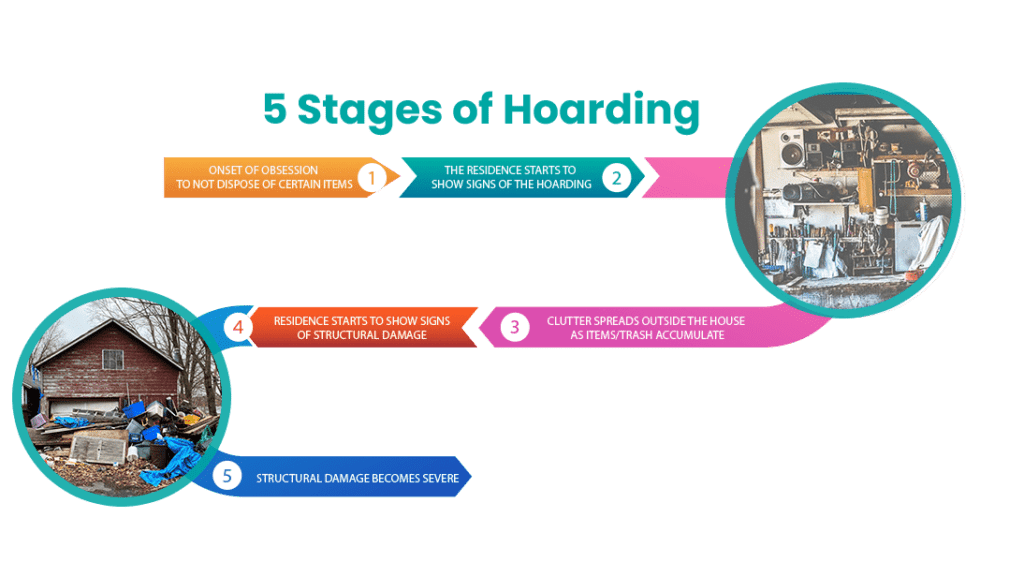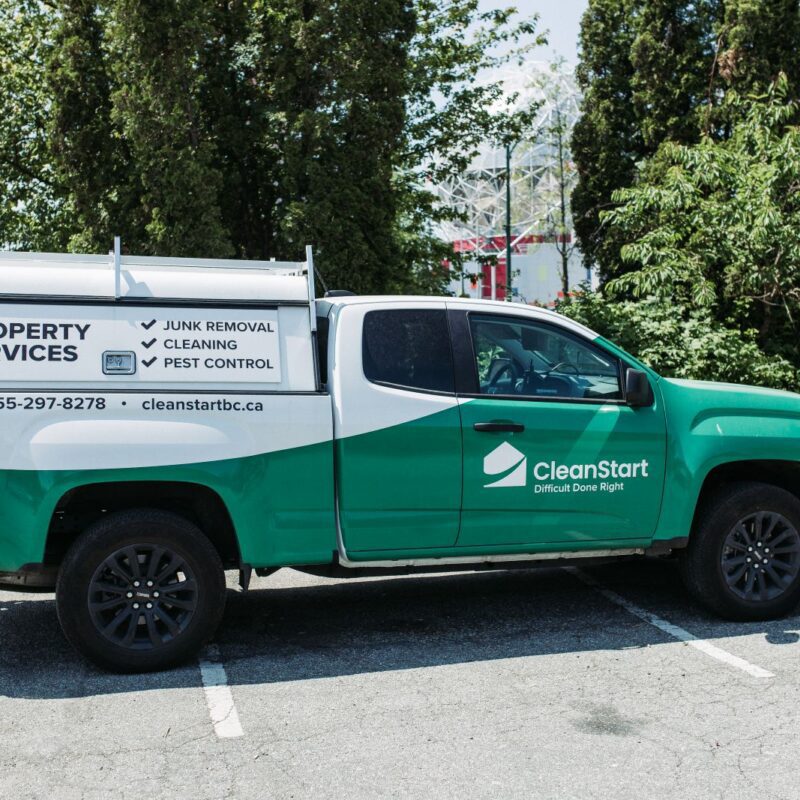5 Stages of Hoarding

CleanStart Property Services provides discrete and compassionate hoarding support services. We often get questions on hoarding, and our friends at Clutter Trucker wrote an awesome article on the 5 stages of hoarding. You can find the full article here: https://cluttertrucker.com/5-stages-of-hoarding/
Some psychological disorders are very difficult for the average individual to understand. If someone isn’t being victimized by one of these disorders, it’s hard for them to understand how certain disorders lead to certain behaviors like hoarding.
The act of hoarding is sometimes troubling to witness. It begs a couple of questions, why would anyone have so much difficulty discarding things that would be considered garbage in the eyes of others? Why do some people feel the need to accumulate large amounts of food and merchandise when using it all would be a hard thing for anyone to do?
The best way to explain a hoarding disorder is to simply provide information about the disorder. In that spirit, the following information is going to focus on the 5 stages of hoarding disorders. Hopefully, this will answer questions you might have about the progression of hoarding disorders.
What are the 5 Levels of Hoarding?
Through research, the mental health community has identified 5 levels of hoarding that seem to offer support for a full hoarding disorder diagnosis. Here are those 5 levels of hoarding:
Stage 1: Onset of Obsession to Not Dispose of Certain Items
Regarding the 5 stages of hoarding, the first level of a hoarding disorder can be rather subtle. It’s characterized by the individual starting to show signs of having a reluctance to discard things that need discarding or the desire to start accumulating merchandise for their future use. In the case of pet hoarding, the hoarder will be actively seeking more pets to bring into the home.
The effects on the home environment of the hoarding sufferer will also be subtle. It might start with a few cabinets that are filled to capacity or a stack of stuff in a corner of a room. The only ones who would notice these kinds of signs are people who are acutely familiar with the hoarder’s home environment and take notice of things starting to accumulate. It’s a warning sign that loved ones and friends should take to heart.
Stage 2: The Residence Starts to Show Signs of the Hoarding
By the time a hoarding sufferer hits the second stage, the home will start to really show signs of the individual’s hoarding. The stacks of trash and merchandise will start to spill over into entryways and walkways throughout the home. There will be no sense of organization as things are likely to be strewn all over the home.
As the trash and or merchandise accumulates at this level, the hoarding sufferer will typically stop any efforts to clean or straighten up the home. Odors will set in, especially if garbage and animal excretions start to accumulate. The dirt and filth will be palpable enough that the hoarder will reject the idea of visitors coming to visit. Should visitors enter many of these homes, the signs of the hoarding will serve to alarm most reasonable individuals.
Stage 3: Clutter Spreads Outside the House as Items/Trash Accumulate
At some point, the hoarding will start to spill over to the outside of the home. This is effectively the third stage of hoarding. It also provides public notice that something is not right in the home where trash is accumulating in sheds, garages, and around the yard.
Inside the home, home spaces will typically become unusable or inhabitable. Appliances in the kitchen could be broken and unusable. That could include major appliances like refrigerators, and heating and air conditioning systems. The odor around the home will become noticeable outside the home. Trash will start accumulating inside and outside the home to the point that rodents and insects come calling, often resulting in infestations.
Stage 4: Residence Starts to Show Signs of Structural Damage
After six months to a year of hoarding behavior, the hoarder’s home often becomes subject to structural damage issues. That could include repulsive odors, mildew, broken windows and doors, water damage along the baseboards and into the walls, exposed electrical wiring that creates a fire hazard, and much more. Outside the home, the accumulation of garbage and sewage could lead to problems with the neighbors.
At this level of a hoarding disorder, the hoarding sufferer might also start showing the personal effects of their behavior. Their hygiene will suffer from unkempt clothing and body odor. This often results in the hoarding sufferer avoiding leaving the home as a means of avoiding public scrutiny. Also, there could be a noticeable change in their mental and physical health.
Stage 5: Structural Damage Becomes Severe
By far, level 5 is the most severe level. The effects of the hoarding will typically create major issues for the individual and in and around the home.
The structural damage in and around the home will typically progress to the point that the home presents environmental hazards. The rodent and insect infestation could jeopardize the entire neighborhood. Faulty wiring and clogged sewer systems could result in fires and floods. Finally, there could come a point when the home becomes uninhabitable to the point that living there could threaten the health of the people who take up residence in the home.
If you or a loved one are starting to show these 5 stages of hoarding, there are treatments available to deal with a hoarding disorder.
For more information on CleanStart’s hoarding cleanup services click here: https://cleanstartbc.ca/junk-removal/hoarding-cleanup


